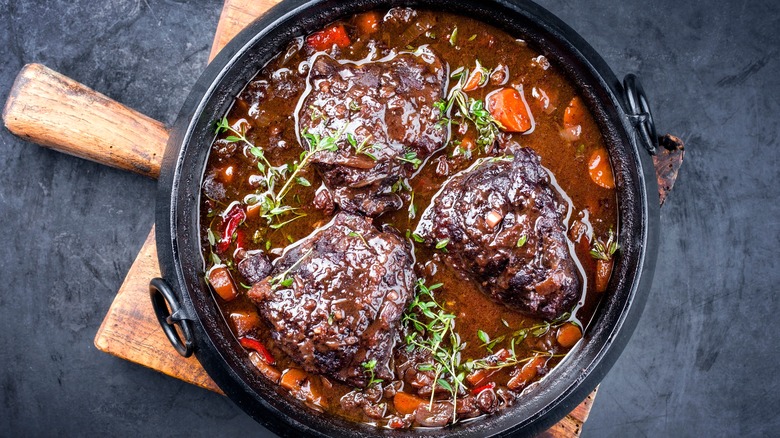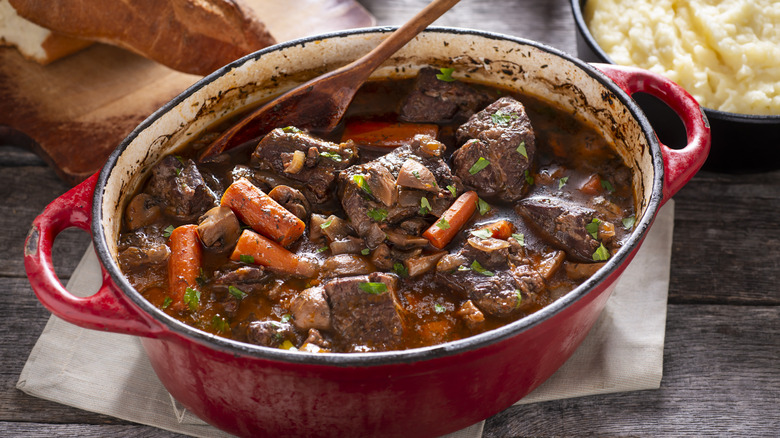Instead Of A Full Boil, Simmer Beef For A More Tender Texture
Cozy beef dishes like a traditional stew or braised brisket make wonderful dinners when the temperature dips. When you put that pot on the stove, however, keep an eye on the liquid and always adjust the heat to avoid boiling for the best flavor and texture. It might be tempting to turn up the heat thinking dinner will be on the table sooner, but the higher heat of boiling can make beef stringy and dry.
Moist, low-heat cooking methods work best for the tougher cuts of meat called for in braised and stewed recipes. These cuts have more tendons which can be chewy and unpleasant if they aren't cooked properly. Boiling can actually contract and toughen up tendons and muscle, but cooking meat at the lower temperature of a simmer will do the opposite, dissolving the collagen in those tough parts into gelatin and giving the beef a wonderful mouthfeel and flavor.
Temperature is the key to tenderness
Boiling meat can also result in overcooking, which makes it tough and dry. As the meat heats up beyond 150 degrees Fahrenheit, which is the well-done point for a steak, the fibers contract, lose their moisture, and become very firm. You've probably noticed this in some grilled steaks, and it's the same process in braised and simmered recipes. Overcooking can happen quickly when a liquid is at boiling point.
You probably remember that boiling happens at 212 degrees Fahrenheit (at sea level), but a simmer starts around 180 degrees, and it's technically any temperature below the boiling point. You can visually recognize the difference in your pot without a thermometer — a simmering pot has small air bubbles coming up around the sides, with a few more in the center of the pot, but by contrast, a boiling pot has large bubbles all over the surface. So save the fierce temperatures for your hard-boiled eggs. And, for the most tender stews, simply adjust your burner so the liquid is simmering, not boiling.

